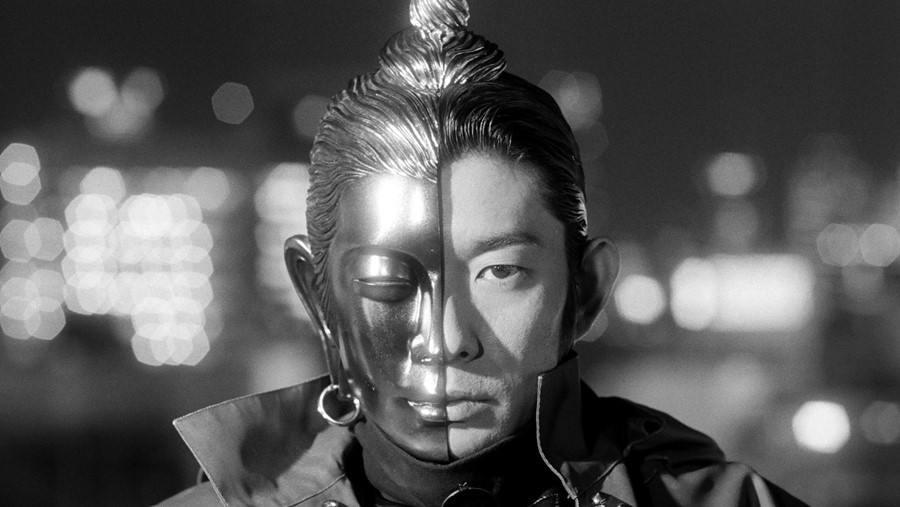As more of Sogo Ishii’s films become available in the UK, James Balmont offers a guide to the renegade – and hugely influential – filmmaker, who is finally getting his dues in the west
Despite being acclaimed as one of the most influential directors in modern Japanese cinema, Gakuryū “Sogo” Ishii – cyberpunk godfather and catalyst for an entire DIY film scene in the 80s – is a name long overlooked in western discourse.
It’s obvious why: the majority of his films – from biker gang dystopias and cerebral new-age meditations to extroverted samurai showdowns – have barely received distribution outside his home country; a result of frustrating rights issues and bureaucratic red tape. But this March, a pair of releases from Third Window Films will contribute to the gradual rectification of this oversight – and though plenty of his masterworks still await their moment, more Ishii films are available now in the UK than ever before.
To mark the occasion, AnOther looks back on the career of a renegade filmmaker quite unlike any other. Read on for a breakdown of outstanding works by one of Japan’s most singular modern auteurs – who is finally getting his dues in the west.
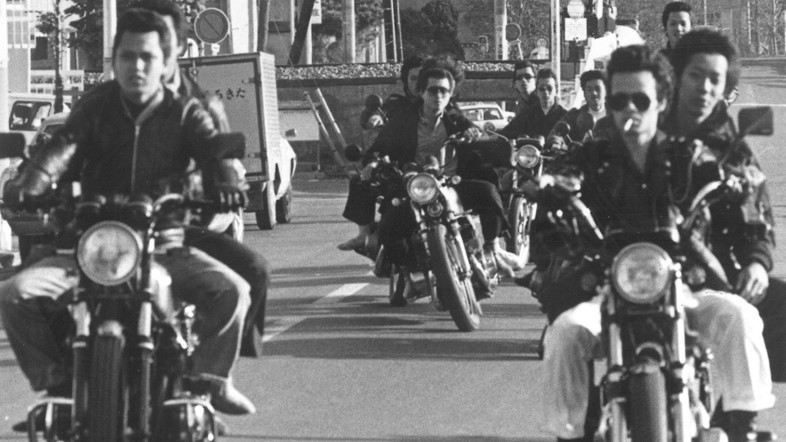
Crazy Thunder Road, 1980
Long considered a holy grail of Japanese independent cinema, Ishii’s bōsōzoku battle royale finally received a UK release via Third Window Films in 2022 – some 42 years after it was made.
Like its chaotic follow-up Burst City, Ishii’s dystopian DIY classic boasts unbridled energy, blistering punk music, and a vision of near-future desolation analogous to that seen in the Mad Max films. It was a central focus of AnOther’s feature on Japanese cyberpunk cinema – where it polled alongside classics such as Akira and Tetsuo: Iron Man.
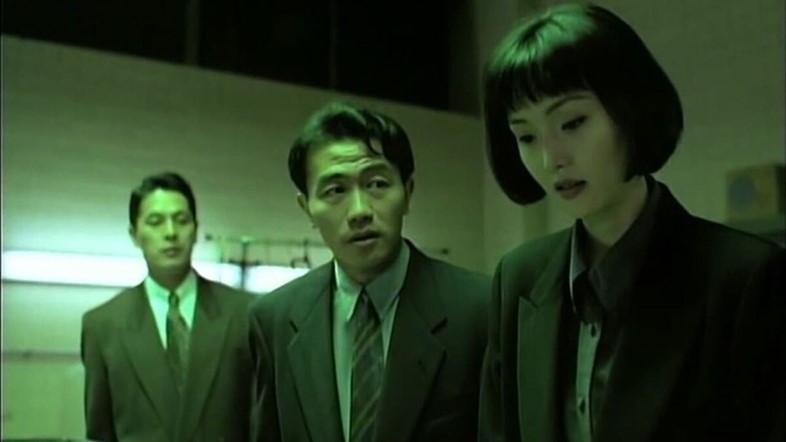
Angel Dust, 1994
After a decade on the sidelines following the release of 1984’s The Crazy Family (during which the director focused on music videos and concert films), Ishii returned to feature filmmaking with a project that all but rejected his earlier punk sensibilities. The psychological thriller Angel Dust (which alludes to the mind-altering aesthetic PCP in its title) marked a total reality shift for the filmmaker as he created a series of cryptic and cerebral cult classics in the 90s.
The setting is bustling Tokyo, where newspapers report on a series of murders that have taken place on the subway. The so-called “syringe killer” is targeting women, and dispatching them via lethal injection on each consecutive Monday. So far, there have been no witnesses. Forensic scientist Setsuko Suma (Kaho Minami) investigates the mystery – becoming increasingly suspicious of a former colleague in the process. Eventually, she’s drawn to an isolated mental facility in the shadow of a looming Mount Fuji.
Profoundly eerie and foreboding from the get-go, Angel Dust lingers on strange and unsettling images: a dark cave in the middle of Aokigahara (Fuji’s infamous “suicide forest”); a malevolent facial expression seen on a glitching VHS tape. Laced with shades of green and sepia, these shots become hypnotic as the narrative turns ominous – with the end result anticipating Kiyoshi Kurosawa’s classic Cure, released several years later.
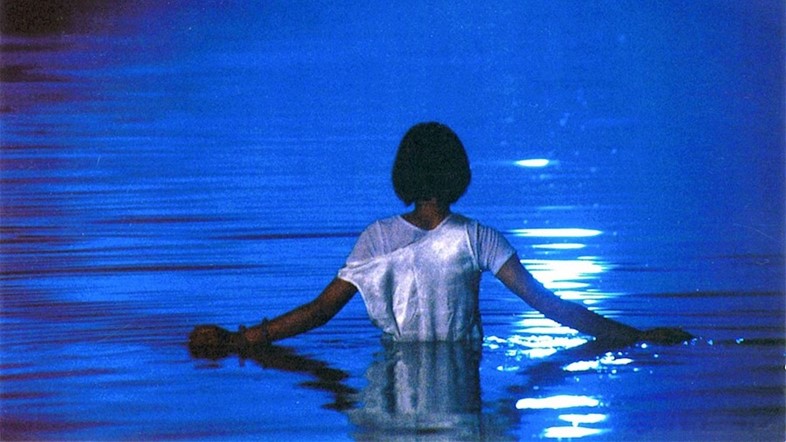
August in the Water, 1995
The residents of Fukuoka report strange occurrences as a meteor passes Earth. A mysterious illness is turning people’s insides to stone, while the town is threatened by an unexpected drought. A talented teen athlete named Izumi (Rena Komine, Labyrinth of Dreams) then learns via horoscope that an accident will threaten her life on August 23 – and on the day of a diving tournament, she senses something strange about the water below.
It might sound like an episode of The X-Files – but August in the Water is a far more spiritual and philosophical prospect than the plot suggests, thanks in part to its mesmerising visuals. From the impossibly rich blues of an aquarium water tank to the billowing white clouds that hang in the sky, August in the Water is transcendent from start to finish – with near-silent montages of Izumi’s acrobatic diving practice, in particular, seeming to slow time down to a crawl.
Partnered with Hiroyuki Onogawa’s ethereal new age score, the end product makes for arguably one of the greatest Japanese films of the 90s. It is confounding, then, that despite significant contemporary acclaim and an obsessive fandom, August in the Water has never received a release outside of Japan. Fortunately, it’s not too hard to find online.
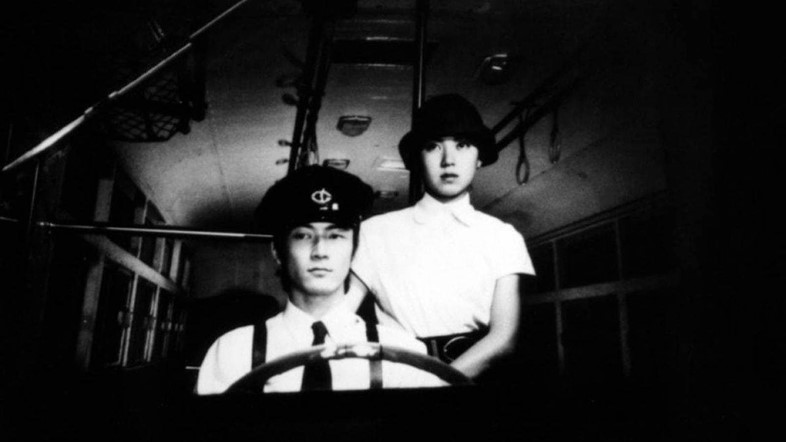
Labyrinth of Dreams, 1997
With howling winds and a downpour of rain providing a bleak backdrop, Labyrinth of Dreams opens with a speeding train set on a collision course with a parked bus. We cut to a newspaper headline in the wake of the tragedy: “bus accident or double suicide?” – and so begins this mysterious mid-century tale of a young female conductor (Rena Komine) who fears that the Tokyo bus driver she’s fallen for (Tadanobu Asano) may be a serial killer.
Labyrinth of Dreams continues the bent of brilliant, surreal and dreamlike productions Ishii wrote and directed in the mid-90s. Filmed entirely in monochrome, this beguiling work is doused in atmosphere and lined with unnerving images (a girl grasps at a bowl of empty snail shells; moths with torn wings struggle to take flight) which only add to the captivating mood.
Once again, the sound design (Masakatsu Shiobara) and a score by long-term collaborator Hiroyuki Onogawa are essential facets of the film’s spell. The contrast of precise foley sounds (a clattering train; a distant, metallic rumble) with cosmic synths and lonely guitar twangs makes the entire journey feel otherworldly. The end result is something that recalls Andrei Tarkovsky’s philosophical sci-fi Stalker as much as David Lynch’s Eraserhead.
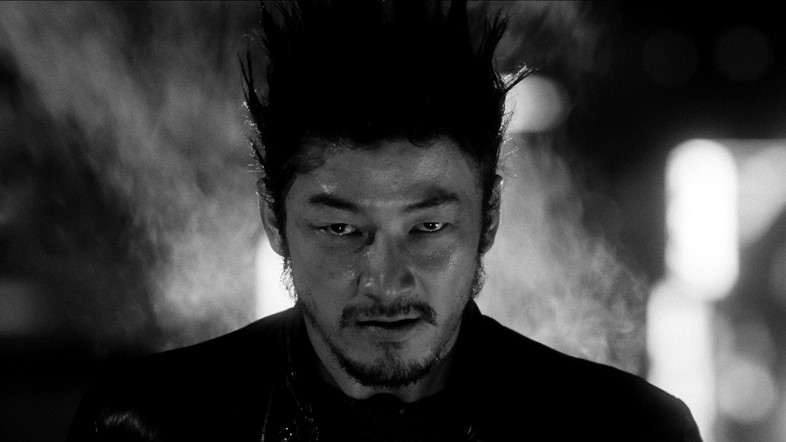
Electric Dragon 80.000 V, 2001
After deciding to form an industrial noise-rock band with Onogawa and Labyrinth of Dreams star Asano, Ishii set his sights on making a super-charged music film – which would be released soon after the box office failure of his 2000 film Gojoe.
Whereas Gojoe placed Asano and Masatoshi Nagase (Mystery Train) in a fantastical conflict in medieval Japan, Electric Dragon 80.000 V would shuffle the deck – pitting the same two actors against each other in a hyper-stylised battle in a dystopian metropolis. A 55-minute blitz of avant-garde noise, frenetic editing and monochromatic visuals, the film would offer an explosion of creativity that harked right back to Ishii’s punk roots – blowing even his iconoclastic early works out of the water in the process.
After making the rounds at festivals like Berlin, Rotterdam and Toronto, Electric Dragon 80.000 V would become a genuine cult film, owing to its jaw-dropping flair, energy and vision. Its scant availability in the UK is thankfully rectified this March, as Third Window Films give it a long-overdue restoration and Blu-ray release.
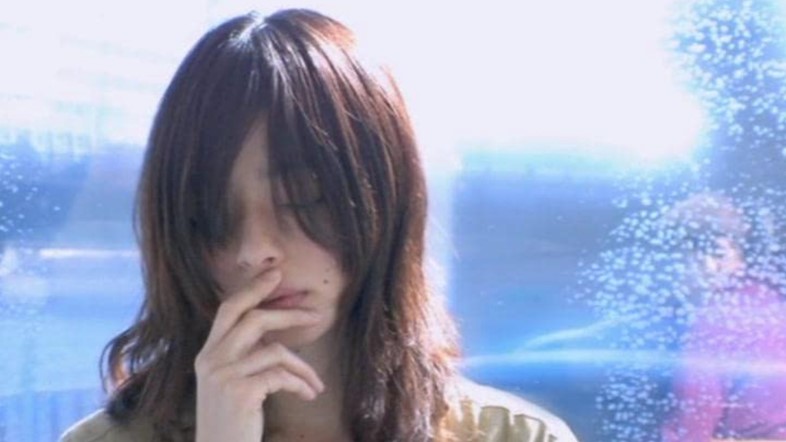
Mirrored Mind, 2004
In the 2000s, Jeonju Film Festival in Korea committed to a long-running project where, each year, three directors would be commissioned to produce a low-budget film. Over a decade, esteemed filmmakers from all over Asia delivered eye-opening projects as part of the program.
Bong Joon-ho (Parasite) shot Influenza on Seoul’s CCTV cameras. Chinese social realism auteur Jia Zhangke (A Touch of Sin) filmed In Public in Datong’s discos and karaoke parlours. Apichatpong Weerasethakul (Memoria) took cameras into Thailand’s jungles for Worldly Desires. And Shinya Tsukamoto (Tetsuo: Iron Man) lodged himself underground for claustrophobic horror film Haze.
In 2004, it was Ishii’s turn, and so he delivered a meditative art film that acted as a coda to his philosophical filmmaking of the 90s: the hypnotic and mysterious Mirrored Mind. The story of a young actress who, in a bout of depression, disappears from a neon-lit city only to re-emerge among blue skies and palm trees, it’s full of arty visuals and kaleidoscopic motifs, as well as Onogawa’s gentle chimes and reverberations. One Letterboxd user describes it as like a “vaporwave ASMR version of Inland Empire”. David Lynch could only dream.

Punk Samurai, 2018
Since 2012’s Isn’t Anyone Alive?, Ishii has operated under the moniker ‘Gakuryū Ishii’ – a symbol, perhaps, for a new chapter in his career. But while this rowdy, big-budget period action-comedy initially appears to offer a profound change of tone, Punk Samurai, released via Third Window Film on March 13, does in fact retain hallmarks of the renegade filmmaker’s most electrifying works.
Playing out to a soundtrack of rockabilly drums, surf riffs, and The Sex Pistols, Punk Samurai is the eclectic tale of a wandering warrior (Go Ayano, Love Exposure) who digs his way into a hole after being accosted by a dangerous clan. After falsely warning them of a fearsome cult preparing to attack, the warrior scrambles to make his lie a reality. Then, things get out of hand – as “a stampede of monkeys and idiots” amass for a bizarre, climactic battle.
Giddy aerial shots, puppet show interludes, talking apes, and telekinetic fighters combine, as Ishii throws everything plus the kitchen sink. Most impressive is the film’s incredible cast – a who’s who of contemporary Japanese cinema including Jun Kunimura (Kill Bill), Masahiro Higashide (Asako I & II), and Electric Dragon 80.000 V leads Asano and Nagase. They’re all clearly having a great time, as is Ishii – which makes this loony romp even more of a joy to behold.
